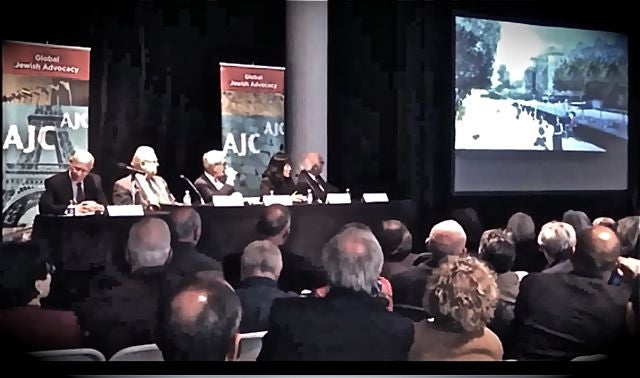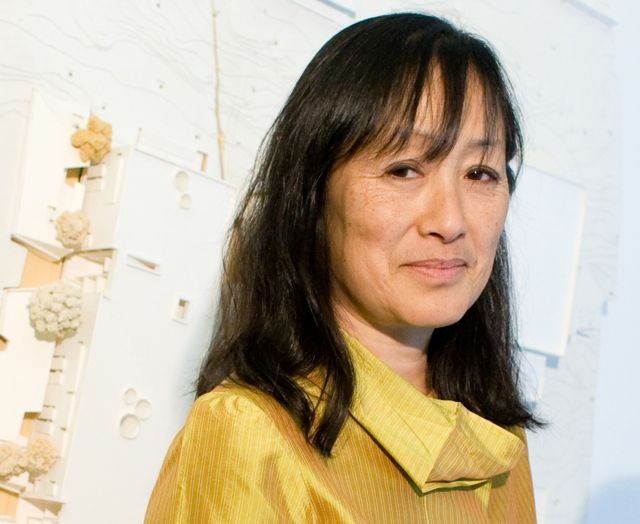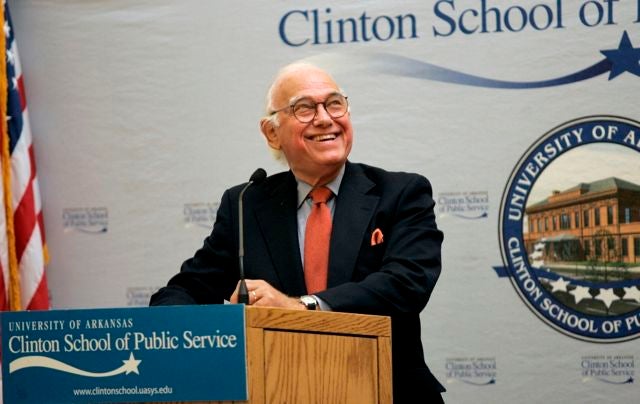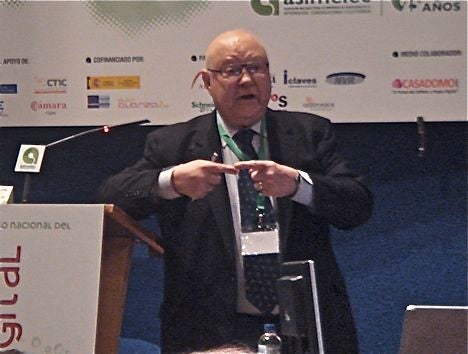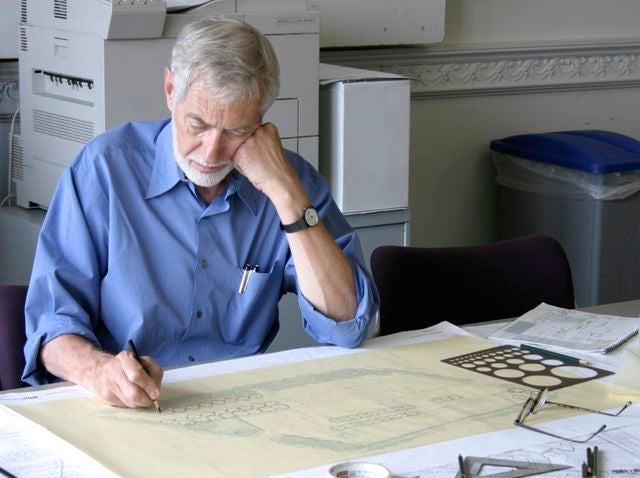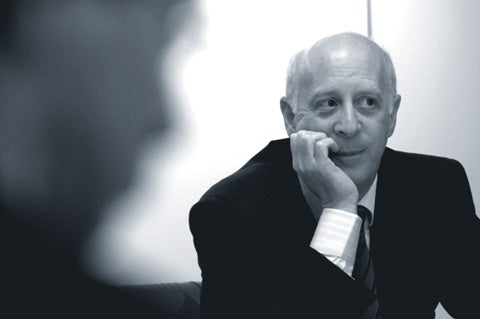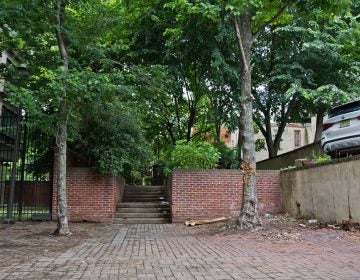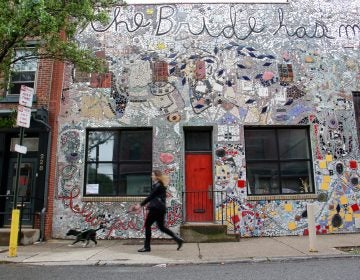Four architects, sittin’ around, talkin’
More than 500 folks packed the new National Museum of American Jewish History [NMAJH] on Friday to hear four prominent architects — including the man responsible for the design of that museum — discuss their work in Philadelphia.
Moderator Paul Goldberger, architecture critic for The New Yorker and, before that, The New York Times, began the symposium — “Crafting American Public Space” — by remarking that so many people had signed up to attend the free symposium that the museum’s small auditorium could not contain them. Instead, the event was relocated to the skylit event space on the museum’s top floor.
It was a testimony both to the museum, and to the subject, that so many had turned out for what Goldberger promised would be a provocative if not “Talmudic” discussion. The critic began by sharing a few of his own observations on the museum. He commented that any notions of a “Jewish approach to architecture” had been “wisely abandoned” and that the designers had turned instead to the idea of Philadelphia for inspiration.
Indeed, the afternoon’s presenters each discussed how they had eschewed literal references, whether to Judaism or to historic architecture, in their work.
Joining Goldberger on the panel were Bernard Cywinski of Philadelphia’s Bohlin Cywinski Jackson, Laurie Olin of Philadelphia’s Olin, James S. Polshek of New York’s Ennead Architects, and Billie Tsien of New York’s Tod Williams Billie Tsien Architects. Henry Cobb of New York’s Pei Cobb Freed & Partners was taken ill on the morning of the event and instead sent along a written statement.
Olin spoke first, and he discussed his overall master plan for the redesign of Independence Mall. The older plan — which involved the demolition of hundreds of vernacular buildings during the late 1950s — had been “deemed somewhat of a failure,” Olin noted, one that was “socially maladroit” in both content and context. His redesign, most of which is now complete, called for the re-siting of the Liberty Bell, a new visitors’ center, and a new building at the far end which would give the entire site “closure.” That building would turn out to be the National Constitution Center, designed by Cobb.
Olin praised that museum as doing “a lot of things,” such as bringing people to the northern end of the Mall, providing parking, and offering space for bus unloading and pickups. He pointed out its porch-like welcome, and praised the fact that its imposing limestone facade offers “no faux colonialism, no ye olde 18th-century stuff.”
Cywinski next spoke of how his design for the Liberty Bell Center “grew from the roots of the master plan,” and how it used two devices as its basis. These were designing an encounter for the Bell that “required a processional” leading up to it, and an intent to marry Olin’s landscape features to the building, via a series of wisteria-draped trellises. “There’s an intimacy between the Hall and the Bell, that was not there before,” Cywinski said.
After briefly recapping the history of the Barnes, and glossing over the controversies surroundings its relocation, Tsien provided a slide tour of the new building’s site, intent, interior spaces, and gardens, which, she said, will be open to the public. The most theoretical of the spaces discussed — since it hasn’t yet opened — it was also the one that seemed to garner the most excitement from those present. (It was also the only building discussed that’s not located in the historic district.)
Polshek next addressed his ideas behind the design of NMAJH. He once again defended the museum’s lack of an entrance on Independence Mall as an “obvious” choice, suggesting that he fully expected “your local newspaper critic” to have problems with it. She did, as did I, and every single person I’ve spoken with.
As he has before, Polshek discussed the meanings of his choice of materials, saying that just as the museum is about stories, so is the building.
Goldberger picked up on the fact that the building’s more fragile material, glass, wraps the sturdier one, terra cotta, calling this a “very intriguing idea.” He then opened the panel and the floor to general discussion, noting that “all of the buildings have some degree of connection to the city.”
That seemed a little of an overstatement since, for example, NMAJH requires admission into the building to experience its best public amenities, the series of balconies which face Independence Mall. And, the much-praised Constitution Center’s “porch” is hardly a gathering space, while the Liberty Bell Center’s chief contribution to the public realm is the nice peek that it provides passersby of the treasure it holds.
The afternoon ended with the panelists weighing in on notions of permanence and change — with a minimum of bloviating and archi-talk — and on the delicate balance of respecting tradition while trying to innovate.
When Goldberger paraphrased several audience questions on the NMAJH’s design intentions, Polshek responded: “After all these years, I’m probably nimble enough to make up answers.” Goldberger rejoined: “You’d make a good rabbi, then!” The museum’s president Michael Rosenzweig enjoyed the afternoon’s biggest laugh, though, by concluding with thanks to the panelists for “providing me with a new set of metaphors” with which to discuss the building.
Contact JoAnn Greco at www.joanngreco.com
Check out her new online magazine, TheCityTraveler at www.thecitytraveler.com
WHYY is your source for fact-based, in-depth journalism and information. As a nonprofit organization, we rely on financial support from readers like you. Please give today.



